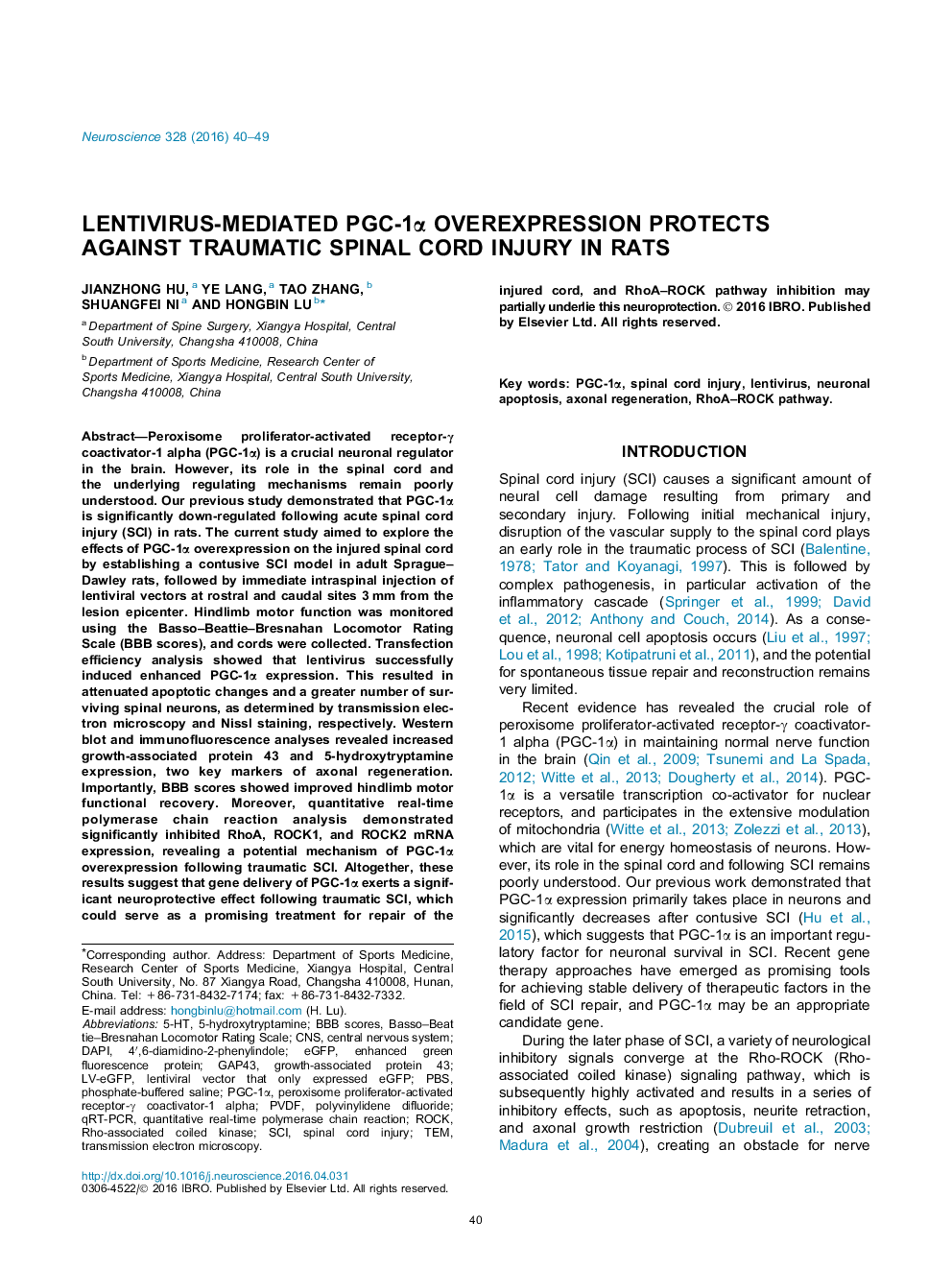| Article ID | Journal | Published Year | Pages | File Type |
|---|---|---|---|---|
| 6271144 | Neuroscience | 2016 | 10 Pages |
â¢Intraspinal injection of lentiviral vectors leads to PGC-1α overexpression.â¢PGC-1α overexpression attenuates neuronal apoptosis following SCI.â¢PGC-1α overexpression increases potential of axonal regeneration following SCI.â¢PGC-1α overexpression promotes hindlimb motor functional recovery following SCI.â¢PGC-1α overexpression may mediate inhibition of the RhoA-ROCK pathway following SCI.
Peroxisome proliferator-activated receptor-γ coactivator-1 alpha (PGC-1α) is a crucial neuronal regulator in the brain. However, its role in the spinal cord and the underlying regulating mechanisms remain poorly understood. Our previous study demonstrated that PGC-1α is significantly down-regulated following acute spinal cord injury (SCI) in rats. The current study aimed to explore the effects of PGC-1α overexpression on the injured spinal cord by establishing a contusive SCI model in adult Sprague-Dawley rats, followed by immediate intraspinal injection of lentiviral vectors at rostral and caudal sites 3 mm from the lesion epicenter. Hindlimb motor function was monitored using the Basso-Beattie-Bresnahan Locomotor Rating Scale (BBB scores), and cords were collected. Transfection efficiency analysis showed that lentivirus successfully induced enhanced PGC-1α expression. This resulted in attenuated apoptotic changes and a greater number of surviving spinal neurons, as determined by transmission electron microscopy and Nissl staining, respectively. Western blot and immunofluorescence analyses revealed increased growth-associated protein 43 and 5-hydroxytryptamine expression, two key markers of axonal regeneration. Importantly, BBB scores showed improved hindlimb motor functional recovery. Moreover, quantitative real-time polymerase chain reaction analysis demonstrated significantly inhibited RhoA, ROCK1, and ROCK2 mRNA expression, revealing a potential mechanism of PGC-1α overexpression following traumatic SCI. Altogether, these results suggest that gene delivery of PGC-1α exerts a significant neuroprotective effect following traumatic SCI, which could serve as a promising treatment for repair of the injured cord, and RhoA-ROCK pathway inhibition may partially underlie this neuroprotection.
